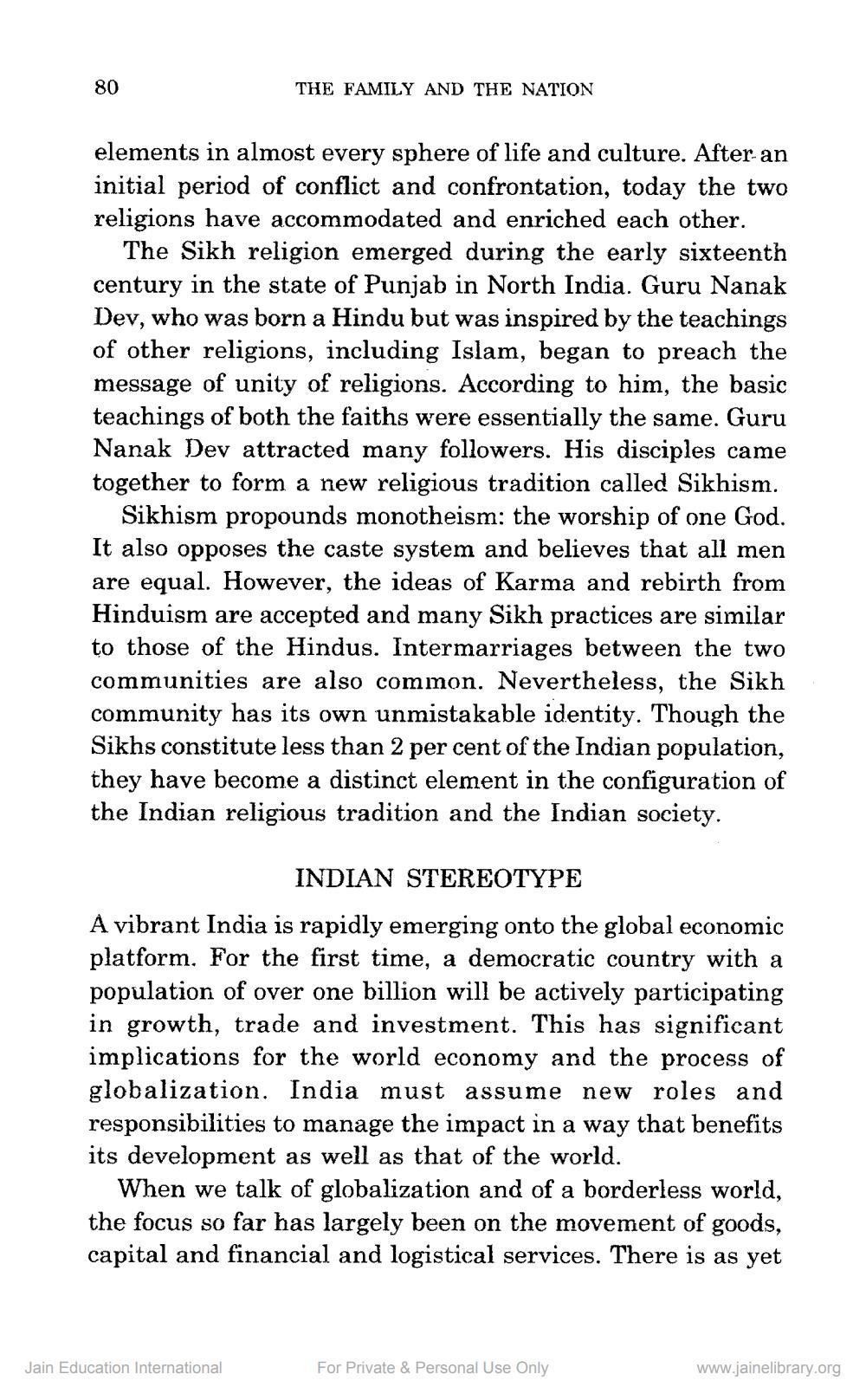________________
THE FAMILY AND THE NATION
elements in almost every sphere of life and culture. After an initial period of conflict and confrontation, today the two religions have accommodated and enriched each other.
The Sikh religion emerged during the early sixteenth century in the state of Punjab in North India. Guru Nanak Dev, who was born a Hindu but was inspired by the teachings of other religions, including Islam, began to preach the message of unity of religions. According to him, the basic teachings of both the faiths were essentially the same. Guru Nanak Dev attracted many followers. His disciples came together to form a new religious tradition called Sikhism.
Sikhism propounds monotheism: the worship of one God. It also opposes the caste system and believes that all men are equal. However, the ideas of Karma and rebirth from Hinduism are accepted and many Sikh practices are similar to those of the Hindus. Intermarriages between the two communities are also common. Nevertheless, the Sikh community has its own unmistakable identity. Though the Sikhs constitute less than 2 per cent of the Indian population, they have become a distinct element in the configuration of the Indian religious tradition and the Indian society.
INDIAN STEREOTYPE A vibrant India is rapidly emerging onto the global economic platform. For the first time, a democratic country with a population of over one billion will be actively participating in growth, trade and investment. This has significant implications for the world economy and the process of globalization. India must assume new roles and responsibilities to manage the impact in a way that benefits its development as well as that of the world.
When we talk of globalization and of a borderless world, the focus so far has largely been on the movement of goods, capital and financial and logistical services. There is as yet
Jain Education International
For Private & Personal Use Only
www.jainelibrary.org




